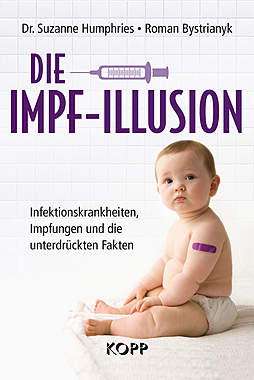- An dottore (hier ist die perfide Lösung der FED) (mTuL) - DT, 15.10.2007, 01:06
- Re: An dottore (hier ist die perfide Lösung der FED) (mTuL) - dottore, 15.10.2007, 10:55
- Re: Neues vom Super-Conduit u. von Ambrose zum Crash - dottore, 15.10.2007, 14:50
- Why not?- Re: An dottore (hier ist die perfide Lösung der FED) - weissgarnix, 15.10.2007, 10:57
- Re: An dottore (hier ist die perfide Lösung der FED) (mTuL) - dottore, 15.10.2007, 10:55
Why not?- Re: An dottore (hier ist die perfide Lösung der FED)
-->Die FED scheint ja hier zunĂ€chst mal auĂen vor. Und wenn doch, wird sie sich vermutlich auf Refinanzierung des ganzen unter AusschluĂ des Kreditrisikos beschrĂ€nken. Insoferne bleibt der"monkey" sehr wohl auf dem RĂŒcken der beteiligten Banken hĂ€ngen (die dafĂŒr vermutlich substanzielle AbschlĂ€ge erwirken werden).
In toto vielleicht gar keine ĂŒble Idee. Solange der Staat bzw. die FED sich nicht als Kreditversicherer beteiligt und eventuelle AusfĂ€lle in pausch und bogen ĂŒbernimmt, will mir das Wort"Skandal" deshalb auch nicht leicht ĂŒber die Lippen gehen...
>Hallo dottore,
>hier ist die Lösung der Fed, wieso sind wir nicht schon drauf gekommen:
>JPM und Citigroup kaufen die ganzen SIVs der Banken auf. Tun sie in den super conduit (jetzt mit 80 Mrd USD angegeben).
>Da sie selber aber so groĂ, trustworthy und unsinkbar sind, können sie natĂŒrlich andererseits JPM und C Anleihen begeben. Die nimmt die FED dann als Wechsel herein (AAA gerated natĂŒrlich) und gibt cash raus.
>Alle gewinnen. Die armen Subprime Banken (BSC etc), da sie ihren toxic junk loswerden. Momentan (siehe www.markit.com) mit 29 von 100 gemarkt bei BBB. Nehmen wir mal an, diese Aktion schafft Vertrauen, kriegt BSC zB seine BBBs fĂŒr sagen wir mal 35 los.
>Via C und JPM lÀuft das FED Geld zu BSC.
>Ganz Ă€hnlich ging's ja neulich schon, als die BAC (Bank of America) CFC (Countrywide) einen 11 Mrd Kredit gegeben hat. CFC war es nicht erlaubt, zum discount window der Fed zu gehen. BAC aber schon. Denn die FED hielt sich daran, daĂ sie nicht DIREKT Geld in die Kassen des gröĂten Mortgage Bankers CFC zur UnstĂŒtzung des binnen Stunden herannahenden Bankrotts geben durfte.
>Das ganze Spiel lÀuft ein bisschen, bis"das Vertrauen" wieder hergestellt ist, sagen wir mal 6-12 Monate, oder auch 3 Jahre, bis der Hausmarkt wieder anzieht, und dann kann JPM und C den Toxic Waste, der ja FED-finanziert wurde, an die Fed selber geben, weil dann der innere Wert wieder gestiegen ist (sagen wir mal auf 70 oder so) und macht einen FETTEN Schnitt dabei.
>Zum SchluĂ hĂ€lt die FED den Kram und kann die Differenz zu 100 dem Steuerzahler aufdrĂŒcken.
>Alle gewinnen. BSC, weil sie ihren Waste lossind, C und JPM machen dabei einen GIGANTISCHEN Schnitt, mich wundert nur, daĂ GS nicht an Bord ist.
>Selbst unsere gute alte Sachsen LB und die Vehicels, die bei uns in den Sparkassen liegen, gehen wieder ein bisschen hoch.
>Um wen kĂŒmmert sich kein Schwein: um den amerikanischen Hausbesitzer, der vor lauter Gier einen 0% down ARM Mortgage Vertrag abgeschlossen hat. Vielleicht bekommt er ein biĂchen verlĂ€ngert, die Steuer bekommt er erlassen, aber er bleibt schön Schuldensklave der Weltbanken.
>Wenns ganz hart kommt, wandelt man die foreclosed homes eben in Sozialwohnungen um und lĂ€Ăt die subprime Mortgage Besitzer gleich drin wohnen.
>Hier ein neuer Link von heute abend, der das ganze fĂŒr morgen ankĂŒndigt und obige Thesen unterstĂŒtzt.
>GruĂ DT
>http://www.bloomberg.com/apps/news?pid=20601087&sid=asyX8HjRCE34&refer=home
>Citigroup, Bank of America Lead Banks Creating Fund (Update1)
>By Mark Pittman and Elizabeth Hester
>Oct. 14 (Bloomberg) -- Citigroup Inc., Bank of America Corp. and JPMorgan Chase & Co. will announce as soon as tomorrow that they are establishing a fund of about $80 billion aimed at reviving the asset-backed commercial paper market, said people familiar with the plan.
>The fund, to which other firms will probably contribute, will buy some assets from structured investment vehicles, or SIVs, the people said. SIVs are units set up by banks to finance purchases of assets including subprime mortgage debt.
>The Treasury Department encouraged the banks to work together, and it jump-started the talks with a meeting of Wall Street executives in Washington on Sept. 16, said a person with knowledge of the deliberations. Robert Steel, the Treasury's top domestic finance official, brought the lenders together and prodded the competitors to keep working through the following weeks. Treasury Secretary Henry Paulson, a former chief executive officer of Goldman Sachs Group Inc., also made calls.
>``Paulson definitely has the cachet to bring everyone to the table, because of his long experience on Wall Street,'' said Joe Mason, associate professor of business at Drexel University in Philadelphia and a former financial economist at the Treasury's Office of the Comptroller of the Currency.
>The fund would help SIVs, which own $320 billion of assets, avoid selling their holdings at fire-sale prices, further roiling the credit markets. The sudden increase in borrowing costs for companies and consumers in August threatens to worsen a housing recession that has slowed the pace of economic growth.
>Restore Liquidity
>Encouraging the talks that led to the creation of the fund is the latest effort by officials to help restore liquidity to credit markets, a campaign started by the Federal Reserve in August, when it cut the interest rate on direct loans from the central bank. Fed officials have said this month that while there are signs of improvement, some markets remain under stress.
>``Some markets have been experiencing illiquidity,'' San Francisco Fed President Janet Yellen said in an Oct. 9 speech in Los Angeles, referring to mortgage-backed securities and asset- backed commercial paper. ``This illiquidity has become an enormous problem for companies that specialize in originating mortgages and then bundling them to sell as securities.''
>As losses in securities linked to subprime mortgages started to spread in July, investors retreated from high-risk assets. SIVs that issued commercial paper to buy the securities found they could no longer roll over the debt, forcing them to sell about $75 billion of their assets.
>Shrinking Market
>The amount of asset-backed commercial paper outstanding tumbled to $899 billion in the week ended Oct. 10, from a high of $1.14 trillion at the end of June, according Fed figures.
>Mortgage defaults by Americans with poor credit histories prompted the collapse in June of two hedge funds managed by Bear Stearns Cos. and triggered a worldwide rout in the debt markets. The European Central Bank began adding liquidity on Aug. 9 after BNP Paribas SA, France's biggest bank, was forced to halt withdrawals from three of its investment funds. The Fed followed, along with counterparts from Sydney to Oslo.
>As yields on asset-backed commercial paper climbed amid the exodus from the market, some companies found their access to borrowing cut off. Countrywide Financial Corp., the biggest U.S. mortgage lender, had to tap an entire $11.5 billion bank line on Aug. 16 after being unable to fund itself with commercial paper.
>``Treasury and the banks are showing they're willing to deal with this directly,'' said Tony Crescenzi, chief bond market strategist at Miller Tabak & Co. in New York. ``They're taking nothing for granted. This will help to deaden the speculative forces.''
>To contact the reporters on this story: Mark Pittman in New York at mpittman@bloomberg.net ; Elizabeth Hester in New York at ehester@bloomberg.net
>Last Updated: October 14, 2007 17:01 EDT
gesamter Thread:
 Mix-Ansicht
Mix-Ansicht

